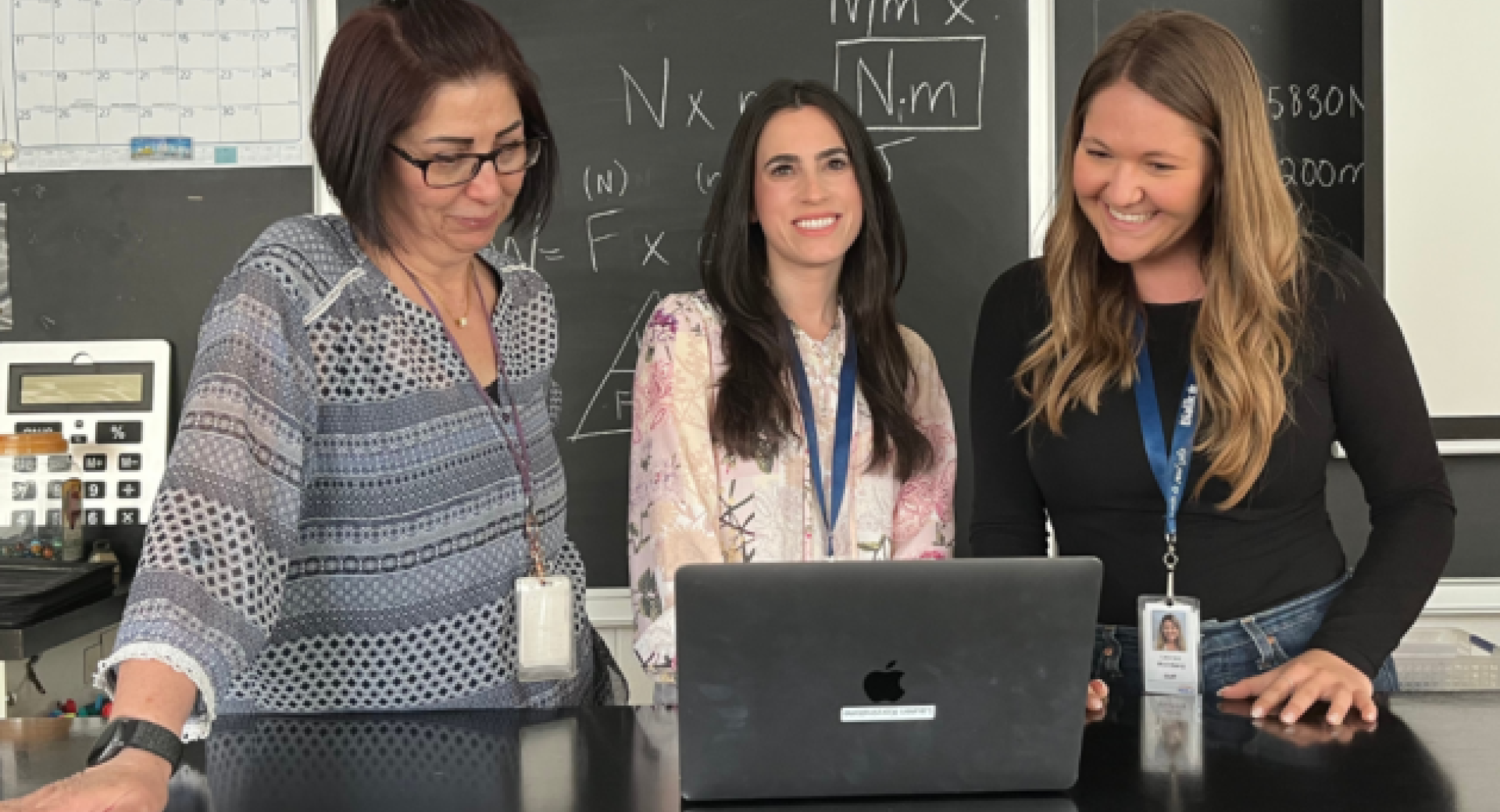
A colleague once said to me, “You’re too young to be old fashioned.” Rather than digitizing my to-do’s, I opt for a hand-written checklist; rather than wearing an Apple watch, I choose one with roman numerals.
You might think I would be critical of artificial intelligence (AI) and turn a blind eye, but that is not the case. I have made it a priority to familiarize myself with various AI tools, share my knowledge with others, and start the conversation about the potential impact of AI on Bialik’s staff and students.
In the past few months, ChatGPT — and AI more broadly — have made headlines. ChatGPT has become a controversial topic for educators, who have begun considering the benefits, challenges and changing roadmap that it will bring to education. Instead of clutching onto misconceptions, I would urge staff and parents to dabble in AI to begin to understand its inherent potential to enhance our teaching and learning practices.
We had our Senior Division General Studies faculty put ChatGPT to the test in a recent professional development workshop. Teachers were asked to see if ChatGPT could complete an upcoming assessment or task. Their jaws literally dropped as they saw that a bot could generate responses at such a high level and with great accuracy.
With the full participation and engagement of our colleagues, this was one of the most energized and polarizing professional development workshops that I and my co-facilitator, Lauren Damelin, have seen. Fear, disbelief, excitement, bewilderment — the SD staff found the prospect of AI tools captivating. And this has started the conversation at Bialik on how to leverage AI to our benefit while remaining appropriately cautious of the downfalls.
Staff are using AI to design accessible educational resources. Studies show that children’s language acquisition and comprehension improves when provided with appropriate and meaningful imagery. This can be particularly helpful for young learners and those studying a foreign language, such as Hebrew and French. Now, we have AI functions that can make this method of learning more accessible. Teachers often spend considerable time searching for the right pictures when developing educational content and resources. With Canva’s text-to-image function, staff can input a description of the desired image, and, in one second, the app creates a corresponding picture.
Students are using the Israeli-developed AI App D-ID to showcase their knowledge. In Moreshet, Grade 6 students learned about Zionist leaders and were tasked with writing a monologue capturing the perspective of the individual. Guided by our Tech Integrator, Merav Anafi, after composing a monologue and choosing a clipart image of the leader, students used the app to create a video — with one click! The students were fully engaged and excited to see their written words come to life in a talking picture. Check out this student video of Ben Gurion.
A serious risk of the quickly developing AI features is the ease with which students could potentially try to cheat the system and submit plagiarized material. It will be important to make students aware of the ethical implications, and we will do this as part of their education around being a responsible Digital Citizen. Knowing the current limitations of AI tools, such as the formulaic repetitive nature of the responses, could also serve to dissuade inappropriate use. Sitting in Ms Csillag’s debating class, we can see our students express themselves with a unique voice — tone, style, perspective — all of which would be obsolete if they relied on an algorithm. As educators, we must remember the importance of establishing solid foundations before adding the bells and whistles.
With this new technology, we will need to continue to change our practice in the classroom. Rather than assessments simply requiring memorization and regurgitation of knowledge and understanding, assignments will continue to push students to think creatively and solve new problems. We will double down on providing our students with time to communicate their learning using diverse methods such as multimedia presentations and podcasts. Our teachers will continue to provide time for students to express their thoughts in writing in real-time, when staff can be present to conference with them and provide tailored feedback. In the Senior Division, it is common to close a lesson with an Exit Ticket and use a range of formative assessments to capture students’ current understanding. Fully knowing each learner’s skills directly impacts the way a teacher will construct their next lesson.
Unlike the Back to the Future car, we can’t punch a date into a console, travel to the future, and see what our classrooms will look like in 10 to 15 years. But we do know that the future of education is already changing and we need to keep our eyes wide open. While it is important to be cautious of the challenges, let’s also be sure to embrace the good of our changing landscape.
